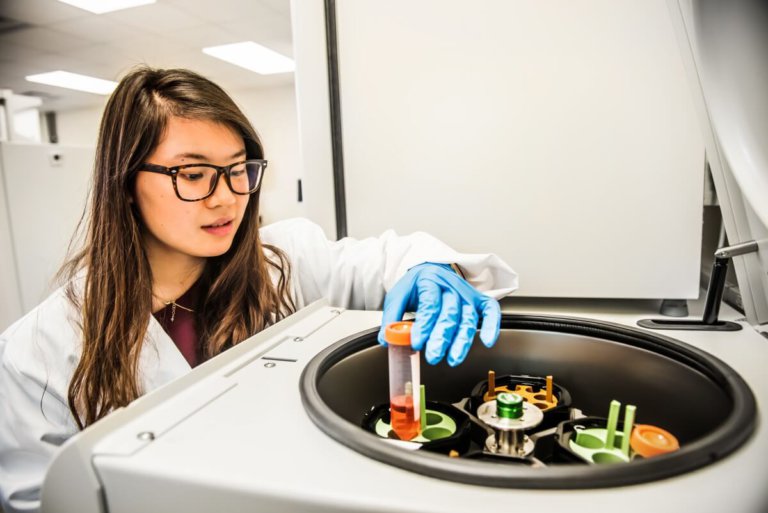
Over two million infections are recorded globally every year. Of this, almost 100,000 are fatal hospital-acquired infections.
This is one of the urgent global health challenges being tackled by Dr. Hitesh Handa, a faculty member in The University of Georgia’s (UGA) School of Chemical, Materials and Biomedical Engineering.
Here, Dr Hitesh Handa leads a vibrant team of researchers and doctoral students in creating bio-compatible coatings for medical devices. The associate professor combines his backgrounds in engineering, chemistry, and surgery to solve the challenges of hospital infections with biomedical engineering.
One advancement involves nitric-oxide releasing materials, a rapid-acting gaseous molecule found in the human body.
Dr Handa explained, “Nitric oxide is released from our blood vessels to prevent platelet activation and clotting of blood vessels. Instead of using heparin (a commercial anticoagulant) to prevent clotting, and instead of using antibiotics and silver to prevent infection, why not use nitric-oxide releasing materials?”
“That’s what our body uses as a natural mechanism.”
With a half-life of under five seconds, nitric oxide does not allow bacteria to even fight back. That’s why doctoral student Arnab Mondal believes this research has “extensive practical applications for antibacterial resistance.”
Biomedical engineering enables medical innovation
UGA is known as one of America’s “Public Ivies”. Talented faculty members and top-notch facilities in the School of Chemical, Materials and Biomedical Engineering make it uniquely poised to tackle some of the world’s grand challenges.

Collaboration is a crucial part of postgraduate study, including in the new PhD Engineering – Biomedical Engineering Emphasis.
This biomedical engineering PhD delivers the rigorous study of engineering theory through advanced modules of fluid mechanics, heat transfer, and biomaterials, among others.
Candidates also spend up to 40 hours on their doctoral research programme. With numerous research labs and ongoing projects, you can zero in on your focus to fine tune future biomedical engineering innovations.
For example, the Handa Lab brings together scientists from vast fields to solve biomedical engineering challenges. It receives healthy public-private funding and has filed for 10 patent applications in the last four years.
“Having tested our materials and catheters against commercially-available catheters, we have found significant improvement in terms of infection from our devices compared to what’s available in the market,” Dr Handa said.
Over at the Gomillion Lab, Dr Cheryl Gomillion is also making strides in biomedical engineering research. Her field focuses on developing complex, multi-functional systems in tissue engineering and regenerative medicine.
Just what does her team do? Well, these scientists study and create natural replacements for damaged tissues, which hold great potential for application in degenerative diseases.
They evaluate cell behaviour, analyse bio-material interactions and modifications, and optimise scaffold design. These bio-materials could be used in pre-clinical tissue modelling systems or to deliver cellular-based therapeutics.
Where disciplinary drive meets personal purpose
The School of Chemical, Materials and Biomedical Engineering is where you can realise your engineering passion in the many and compelling research opportunities available here.
Over at the Regenerative Bioscience Center (RBC), for example, Dr Luke Mortensen is optimising imaging technologies to advance cell therapy. He is eager to use biomedical engineering to “address important biological problems where canonical techniques and methods of thinking have failed.”
Optimised imaging would allow medical professionals to dynamically observe and probe a living system to investigate the therapeutic niche for cell therapy.
“Specifically, my research uses multi-photon microscopy to enable the design of next-generation cellular therapeutics in the context of skeletal disease and bone regeneration,” Dr Mortensen explained.
His colleague Dr Ross Marklein is also making headway in regenerative medicine. Dr Marklein brings his unique background at FDA’s Division of Cellular and Gene Therapies to his UGA lab.
Here, he incorporates his expertise in cell manufacturing, single-cell profiling, and bio-materials with knowledge of FDA regulatory framework to maximise the real-world impact of cell-based therapies.
Interdisciplinary collaboration is often touted as a building block of effective research, and there is living proof of this at the School.
Hence, doctoral students will encounter disciplinary meeting points that present opportunities for wider scientific investigation.
Dr Melissa Hallow represents one such meeting point between epidemiology and bio-statistics. She creates computer models that predict how diseases such as diabetes will respond to drug therapies while teaching engineering and public health courses.
Using her technological expertise, Dr Hallow uses dynamic disease models to not only improve our understanding of diseases and treatment approaches but also positively influence patient adherence to treatment.
To achieve such heights in their projects, expert faculty members such as Drs Handa, Gomillion, Mortensen, Marklein, and Hallow engage PhD and MS students in research that advances technology and disciplinary understanding.
As a result, biomedical engineering PhD candidates form solid working partnerships with their mentors and guides, who in turn lead them through the graduate school journey and into their chosen profession.
This pursuit of innovation via academia contributes to healthier people, a more secure future, and stronger communities around the world.
Follow the University of Georgia on Facebook, Twitter, Instagram, YouTube and LinkedIn
Like this? Then you’ll love…
4 top online degree programmes in health sciences
What it’s like to be a student at the University of Georgia







